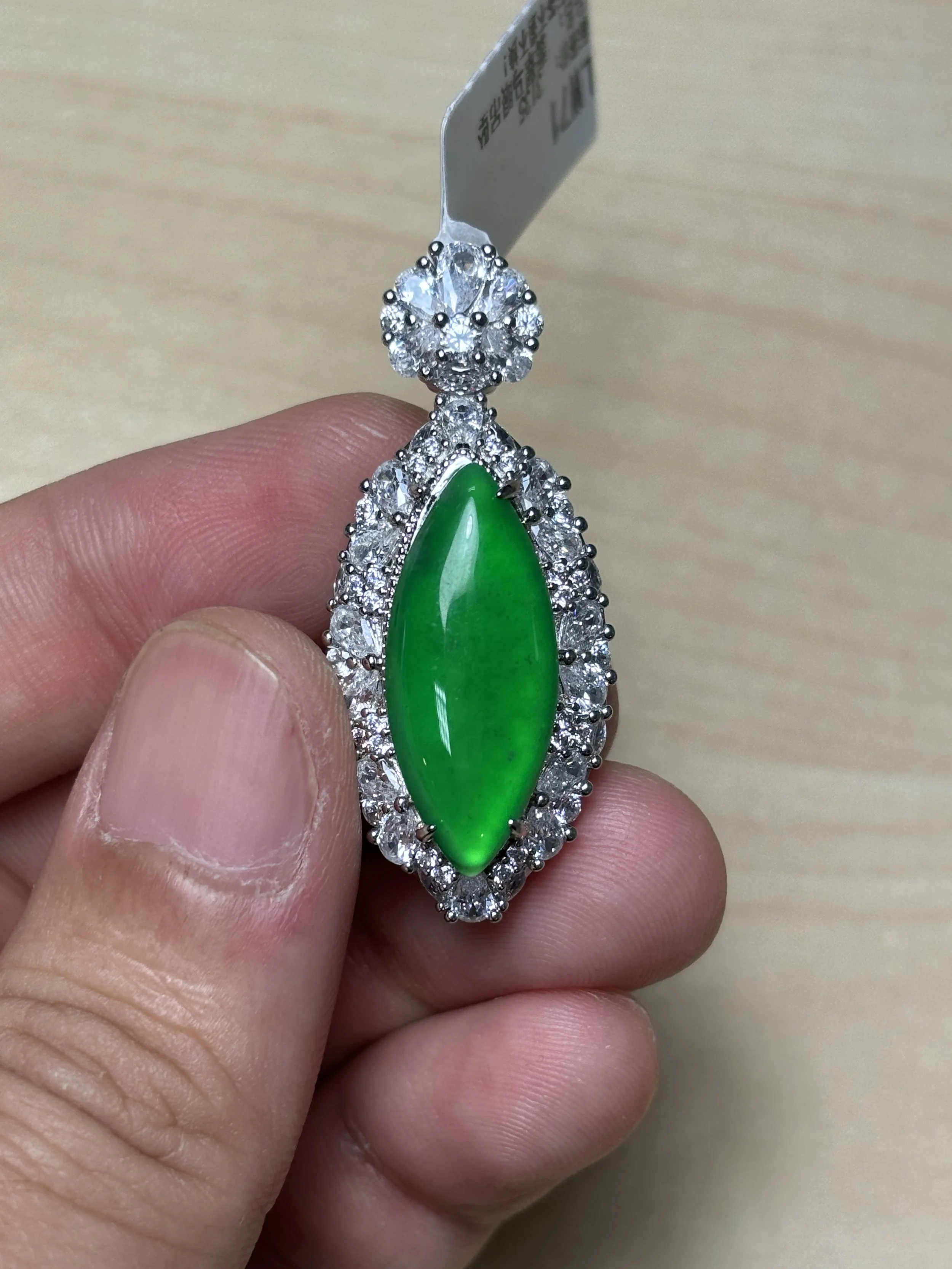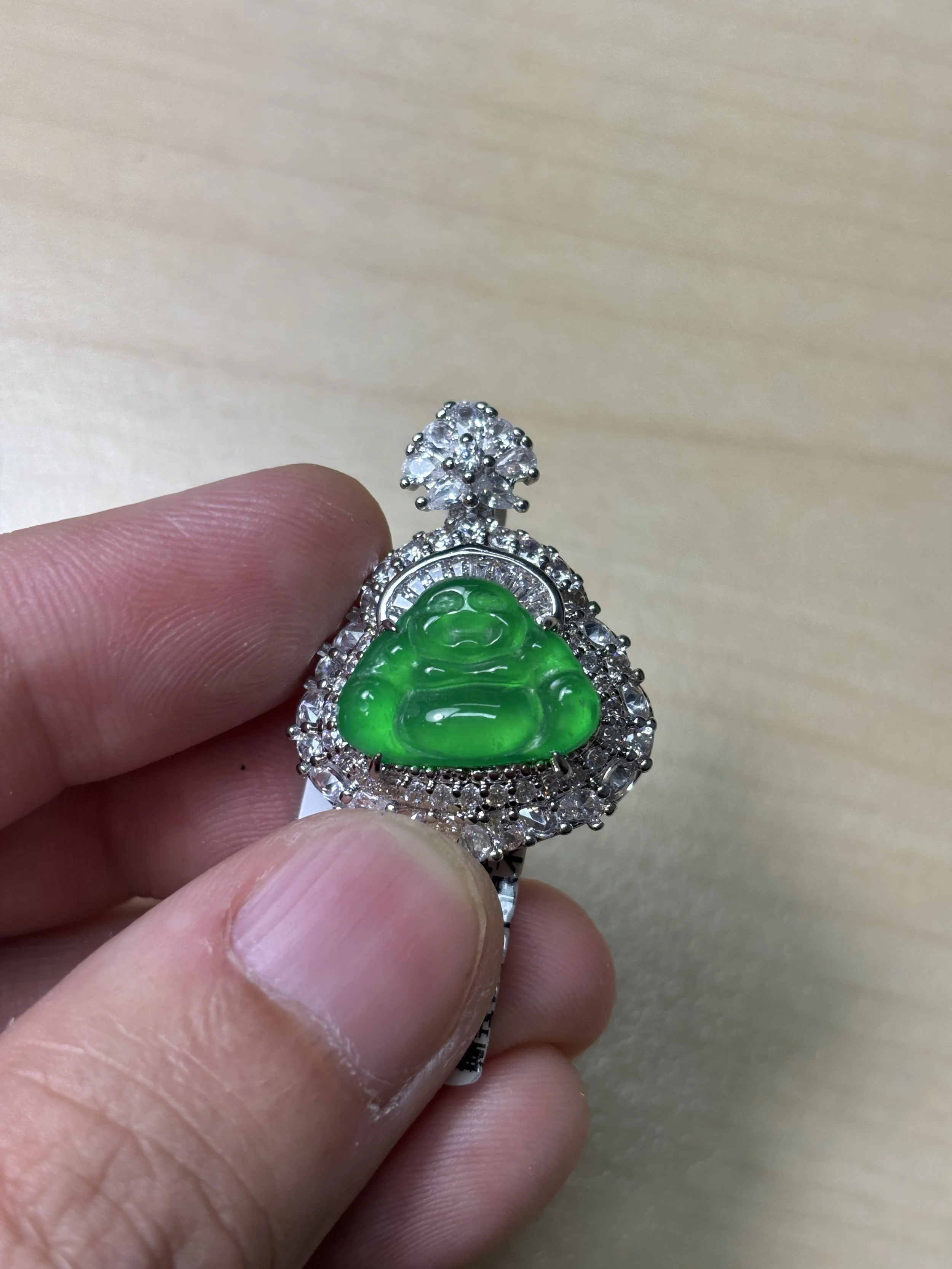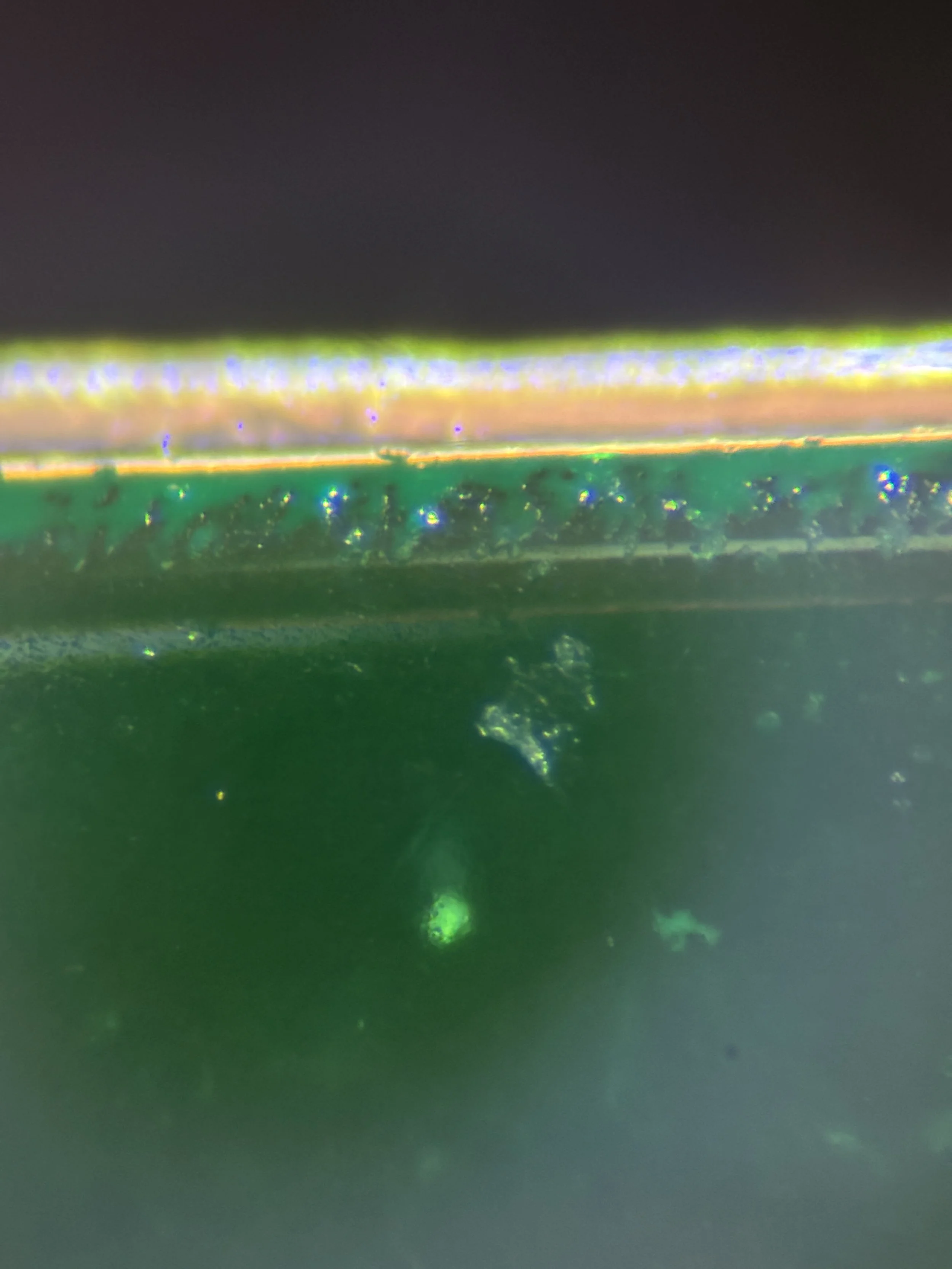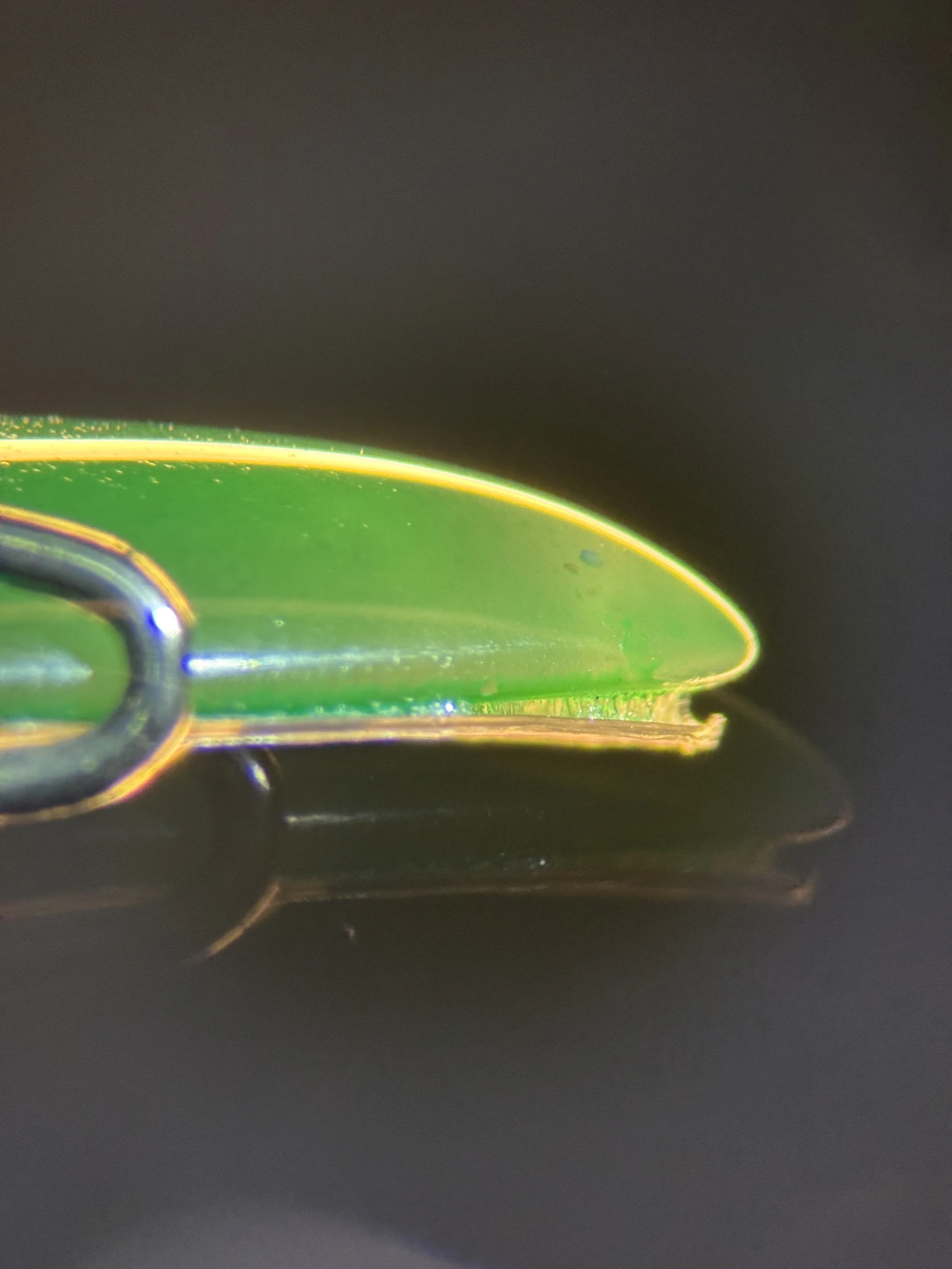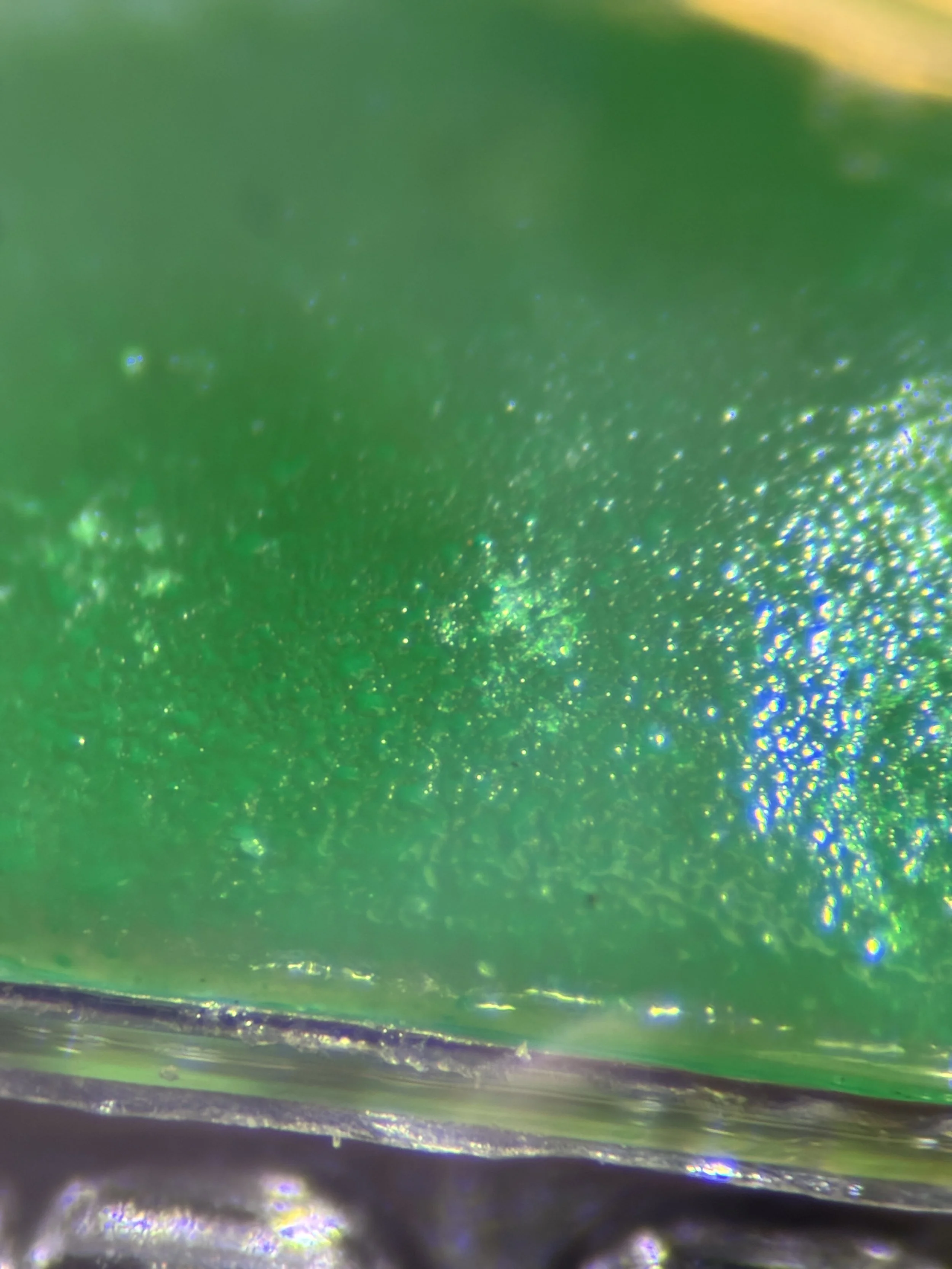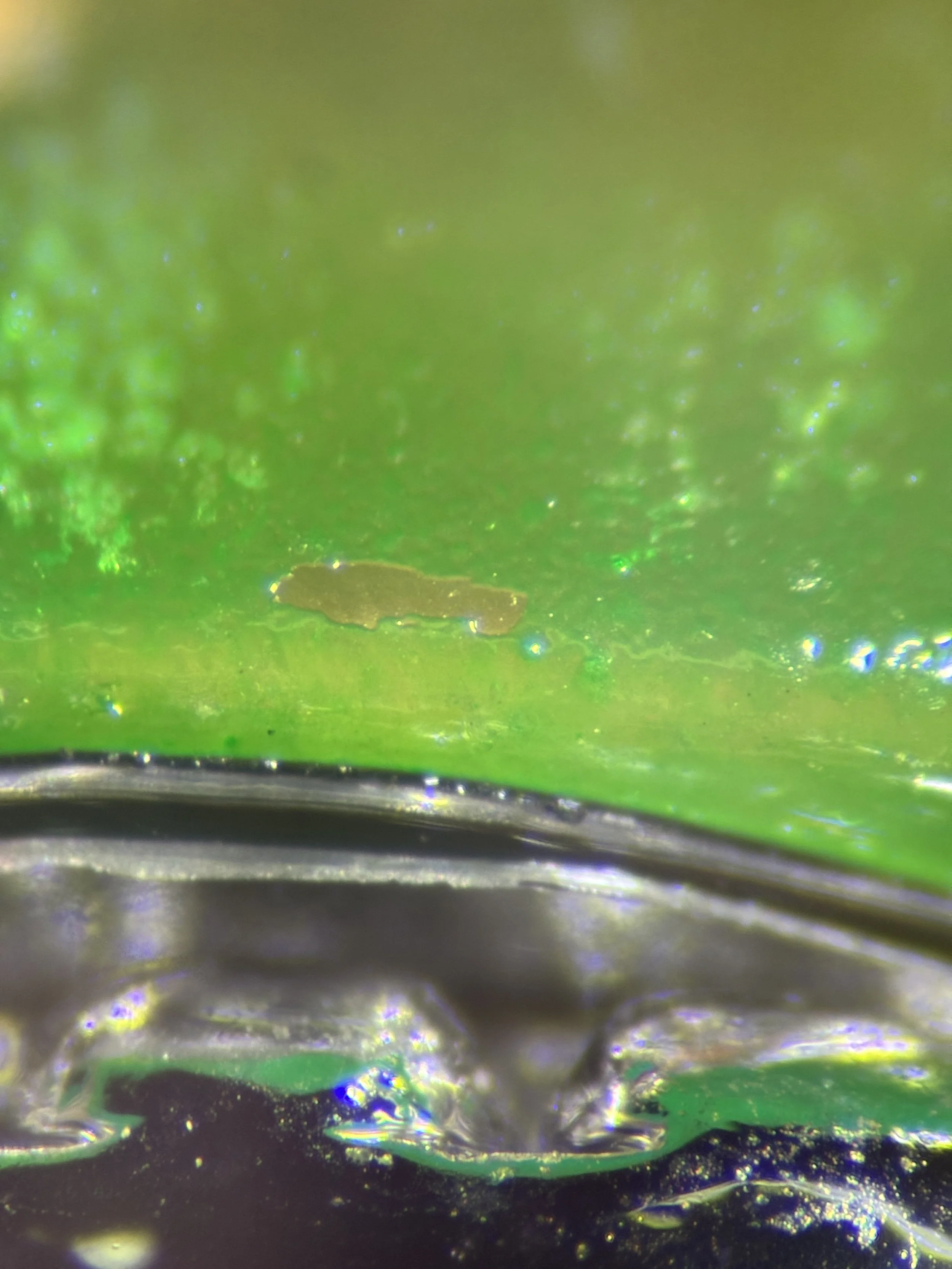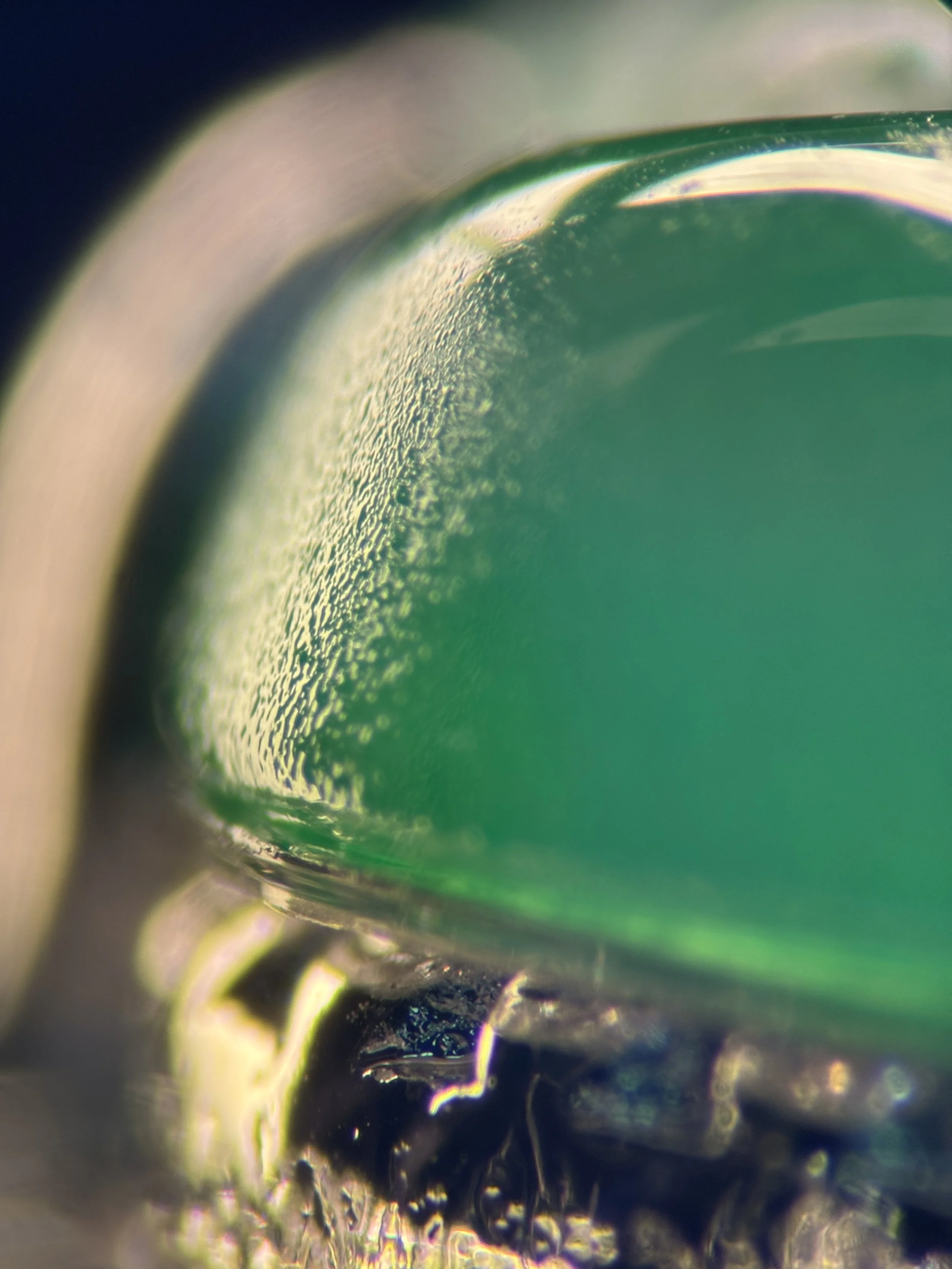Enhancements Observed on Guatemalan Jadeite Jades
Our laboratory has observed a significant increase in the number of jadeite jade items from Guatemala submitted for testing and reporting.
Given that jadeite jade items from Guatemala are readily available and more affordable alternatives to their Burmese counterparts of the same/similar qualities, most of our clients do not expect any enhancements performed on the items. They simply want a reputable local report for their customers over a Chinese one provided by their sellers.
4 pieces of items stood out for their combination of transparency, tone and saturation of colour among a batch submitted recently.
All 4 items returned spot refractive indices between 1.65 to 1.66, in line with that of jadeite jade materials.
Given the vibrancy of the colour, additional testing is required.
Random spot testing of the surface of the mounted pieces using FTIR spectrometer returned all 4 pieces with results in line with Type A jadeite jades, i.e. no indication of acid bleaching and polymer/resin impregnation.
However, UV-Vis-NIR testing showed broad absorption spectra in the 300-500 range and 580 to 900 range. This is in line with Type C jadeite jades, i.e. indication of dye.
In order to confirm this result, all 4 pieces were observed under magnification.
Out of the 4 pieces, 3 have visual evidence of a neon green paste-like coating between the jade and their respective foilback. This green substance is not an adhesive and also not a green foilback. This means that the green coating remains on the jades even after removing the foilback if requested to inspect.
They do not have the typical inclusion scene of typical Type C dyed jadeite jades with root-like colour concentration in its natural fissures.
As for the remaining piece, the whole jade was treated with a green surface coating, not just between the gemstone and the foilback.
As such, the surface of the jade has an uneven, bubbly, wet look that is not typical of any jadeite jade under magnification. This cannot be observed under the naked eye.
With visual confirmation, the base colours of most of these pieces are the more commonly found translucent gray observed from Guatemala. These enhancements described and observed are not permanent.
With prices of Guatemalan jadeite jades steadily rising, we can expect more enhancements to be performed on them to resemble top quality items from Myanmar in order to price match. Consumers should remain cautious of their purchases regardless of geographical origin and make use of gemological services if in doubt.

